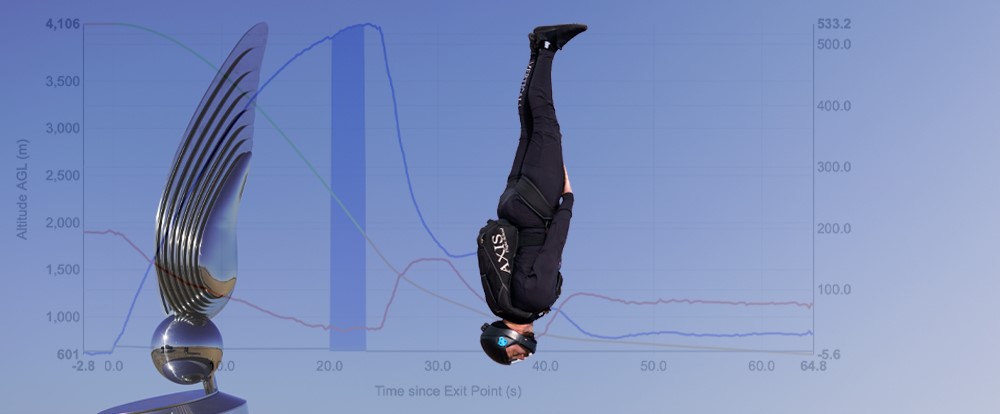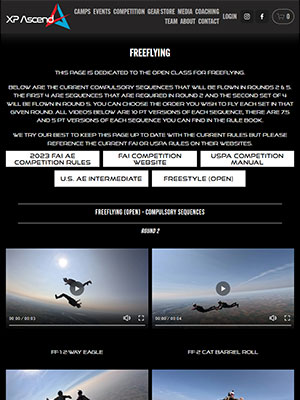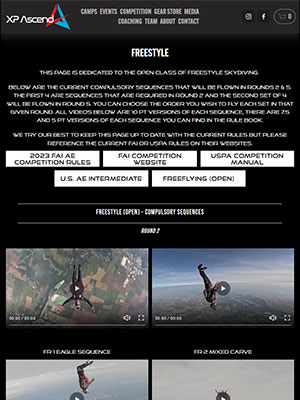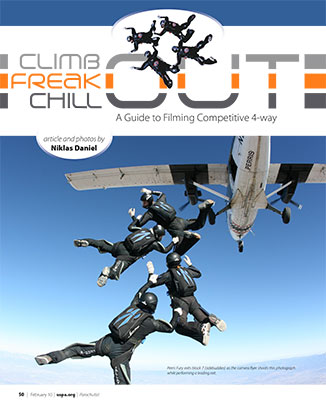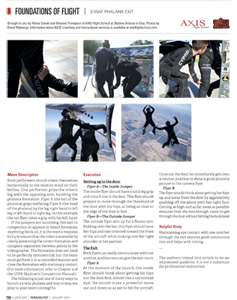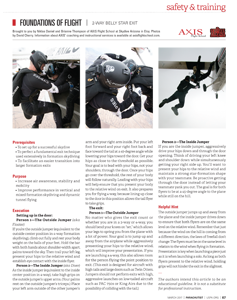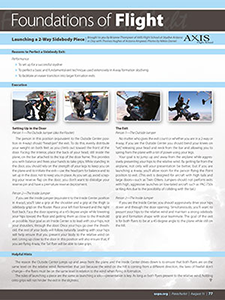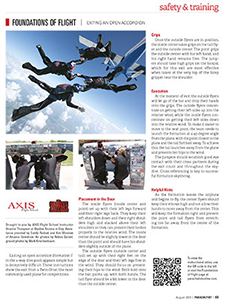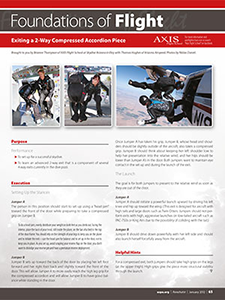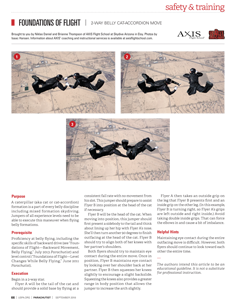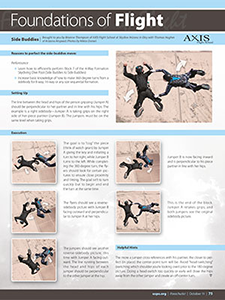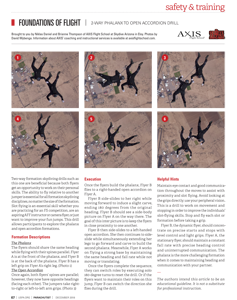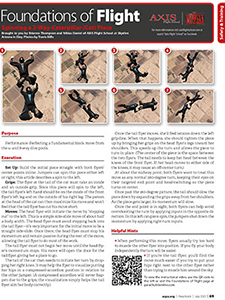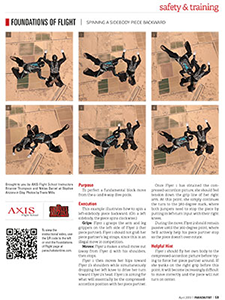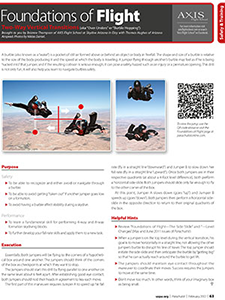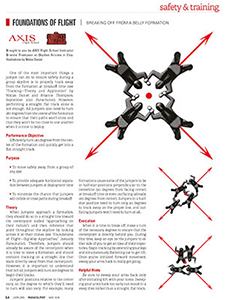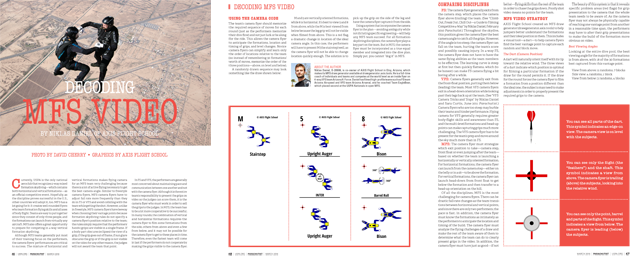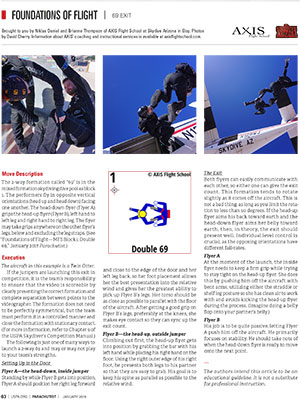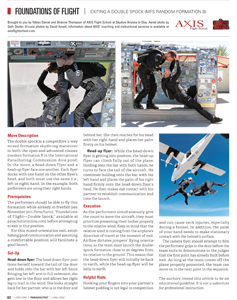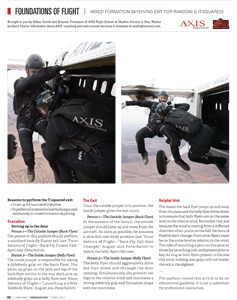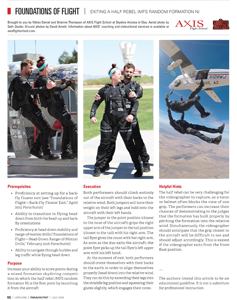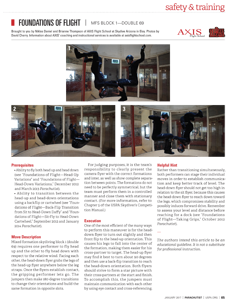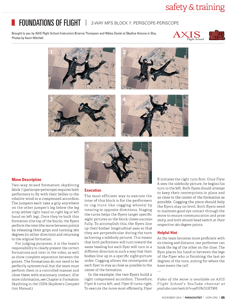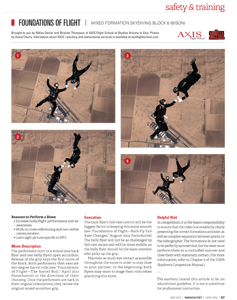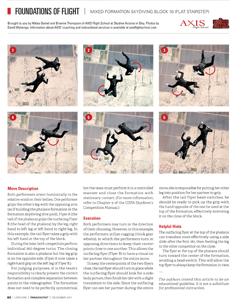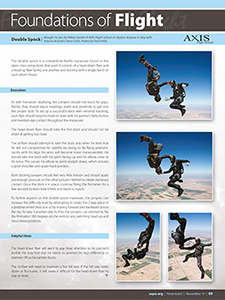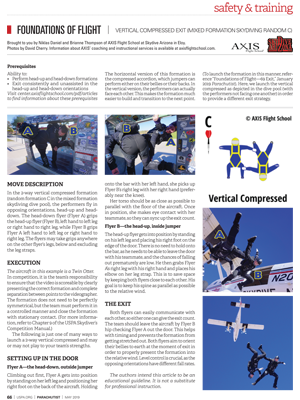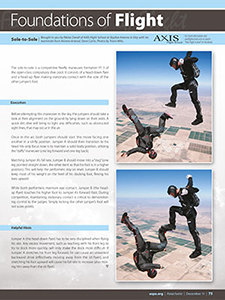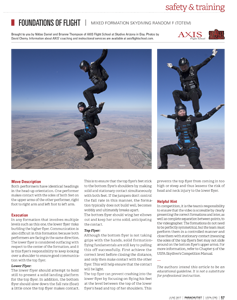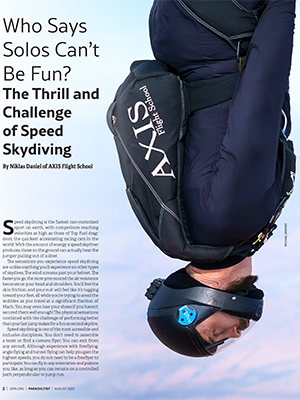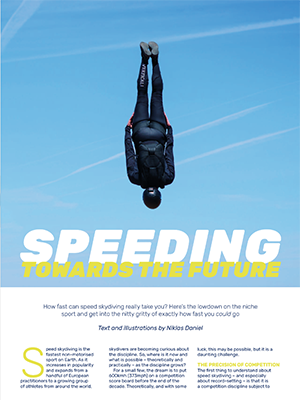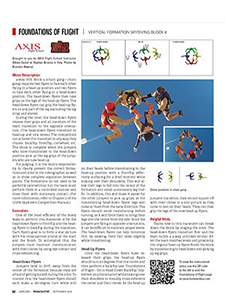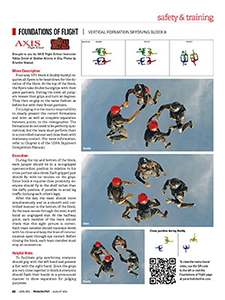Table of Contents
Jump to a chapter/section by clicking on it
or scroll through the complete topic.
Chapter 1: AE
Chapter 2: Camera
Section 1: FS
Chapter 3: FS
Section 1: Exit
Section 2: Page
Section 3: Solo Skills
Chapter 4: MFS
Section 1: Camera
Section 2: Exit
Section 3: Page
Chapter 5: Speed
Chapter 6: VFS
Chapter 1: AE

AE Freestyle (Open)
Article by XP Ascend.
A page dedicated to the Open Class for freestyle skydiving.
[ Full Article ]

AE Intermediate
Article by XP Ascend.
A page dedicated to the Intermediate Class for freesyle and freeflying (test event at the 2023 U.S. Nationals).
[ Full Article ]
Chapter 2: Camera
Camera > FS

A Guide to Filming FS 4-Way — Climb Out, Freak Out, Chill Out
Article by Niklas Daniel. Visuals by by Niklas Daniel.
This article is for jumpers who already have some experience flying camera and are trying to expand their knowledge of how to film formation teams in a competition setting. I will focus mainly on 4-way, because I believe it to be the most difficult formation skydiving discipline to film (aside from vertical formation skydiving), due to the many different exits and faster key speeds. However, once you have a firm grasp of shooting 4-way, the same principles can be applied to 8-way and larger formations.
[ Full Article ]
Chapter 3: FS
FS > Exit

2-Way Phalanx Exit
Article by Niklas Daniel and Brianne Thompson. Visuals by by David Wybenga.
Learn all about the 2-Way Phalanx exit, from move description to execution and helpful hints.
[ Full Article ]

2-Way Belly Star Exit
Article by Niklas Daniel and Brianne Thompson. Visuals by by David Cherry.
Increase your air awareness, stability and mobility, and improve your performance in vertical and mixed formation skydiving and dynamic tunnel flying.
[ Full Article ]

Launching a 2-Way Sidebody Piece
Article by Niklas Daniel and Brianne Thompson. Visuals by by Niklas Daniel.
Set up for a successful skydive, perfect a basic and fundamental exit technique used extensively in 4-way formation skydiving, and facilitate an easier transition into larger formation exits.
[ Full Article ]


Exiting an Open Accordion (4-Way FS Random F)
Article by Brianne Thompson with Sandy Radsek and Kim Winslow. Visuals by by Niklas Daniel (air) and Mark Kirschenbaum (ground).
Exiting an open accordion (formation F in the 4-way dive pool) appears simple but is deceptively difficult. These instructions show the exit from a Twin Otter, the most commonly used plane for competitions.
[ Full Article ]
[ Video ]

Exiting a 2-Way Compressed Accordion / Periscope (MFS Block 7)
Article by Brianne Thompson with Thomas Hughes. Visuals by by Niklas Daniel.
Set up for a successful skydive and learn an advanced 2-way exit that is a component of several 4-way exits currently in the dive pool.
[ Full Article ]
FS > Page

2-Way Belly Cat-Accordion Move
Article by Niklas Daniel and Brianne Thompson. Visuals by by David Cherry.
A caterpillar (aka cat or cat-accordion) formation is a part of every belly discipline including mixed formation skydiving. Jumpers of all experience levels need to be able to execute this maneuver when flying belly formations.
[ Full Article ]

Side Buddies (FS Block 7)
Article by Niklas Daniel and Brianne Thompson. Visuals by by Niklas Daniel.
Learn how to effciently perform Block 7 of the 4-Way Formation Skydiving Dive Pool (Side Buddies) and increase your basic knowledge of how to make 360-degree turns from a sidebody for 8-way, 16-way or any size sequential formation.
[ Full Article ]

2-Way Phalanx to Open Accordion Drill
Article by Niklas Daniel and Brianne Thompson. Visuals by by David Wybenga.
Two-way formation skydiving drills such as this one are beneficial because both flyers get an opportunity to work on their personal skills. The ability to fly relative to another jumper is essential for all formation skydiving disciplines, no matter the size of the formation.
[ Full Article ]


Spinning a 2-Way-Caterpillar (Cat) Piece
Article by Niklas Daniel and Brianne Thompson. Visuals by by Travis Mills.
Perfect a fundamental block move from the 4- and 8-way dive pools.
[ Full Article ]
[ Video ]


Spinning a Sidebody Piece Backward
Article by Niklas Daniel and Brianne Thompson. Visuals by by Travis Mills.
Perfect a fundamental block move from the 4- and 8-way dive pools.
[ Full Article ]
[ Video ]


Two-Way Verticals (aka "Over Unders" or "Burble Hopping")
Article by Brianne Thompson with Thomas Hughes. Visuals by by Niklas Daniel.
Safety: Recognize and either avoid or navigate through a burble, avoid getting “taken out” if another jumper goes low on a formation, and avoid having a burble affect stability during a skydive. Performance: Learn a fundamental skill for performing 4-way and 8-way formation skydiving blocks and further develop your fall-rate skills and apply them to a new task.
[ Full Article ]
[ Video ]
FS > Solo Skills

Breaking off from a Belly Formation
Article by Brianne Thompson. Visuals by and illustrations by Niklas Daniel.
One of the most important things a jumper can do to ensure safety during a group skydive is to properly track away from the formation at breakoff time. However, performing a straight, flat track alone is not enough.
[ Full Article ]
Chapter 4: MFS
MFS > Camera

Decoding MFS Video
Article by Niklas Daniel. Visuals by by David Cherry and illustrations by Niklas Daniel.
Although MFS teams generally put most of their training focus on the performers, the camera flyers' performances are critical to success. The mixture of horizontal and vertical formations makes flying camera for an MFS team very challenging because there is a lot of active flying necessary to get the best camera angle.
[ Full Article ]
MFS > Exit

69 Exit (MFS Block 1)
Article by Niklas Daniel and Brianne Thompson. Visuals by by David Cherry.
The 2-way formation called “69” is in the mixed formation skydiving dive pool as block 1. Learn more about this exit, where performers fly in opposite vertical orientations (head up and head down) facing one another.
[ Full Article ]

Exiting a 2-Way Compressed Accordion / Periscope (MFS Block 7)
Article by Brianne Thompson with Thomas Hughes. Visuals by by Niklas Daniel.
Set up for a successful skydive and learn an advanced 2-way exit that is a component of several 4-way exits currently in the dive pool.
[ Full Article ]


Exiting a Double Spock (MFS Random B)
Article by Niklas Daniel and Brianne Thompson. Visuals by by Seth Studer (aerial) and David Amett (ground).
Learn all about exiting a Mixed Formation Skydiving Random B (Double Spocl), from move description, prerequisites, set-up, to execution and helpful hints.
[ Full Article ]
[ Video ]

MFS Exit for Random G (T-Squared)
Article by Niklas Daniel and Brianne Thompson. Visuals by by David Cherry.
Learn all about the Mixed Formation Skydiving Random G (T-Squared), from move description to execution and helpful hints.
[ Full Article ]


Exiting a Half Rebel (MFS Random N)
Article by Niklas Daniel and Brianne Thompson. Visuals by by Seth Studer (aerial) and David Amett (ground).
Increase your ability to score points during a mixed formation skydiving competition in which the half rebel (MFS random formation N) is the first point by launching it from the aircraft.
[ Full Article ]
[ Video ]
MFS > Page

MFS Block 1—Double 69
Article by Niklas Daniel and Brianne Thompson. Visuals by by David Cherry.
Learn all about the Mixed Formation Skydiving Block 1 (Double 69), from move description to execution and helpful hints.
[ Full Article ]

2-Way MFS Block 7—Periscope-Periscope
Article by Niklas Daniel and Brianne Thompson. Visuals by by Kevin Mitchell.
Learn all about the Mixed Formation Skydiving Block 7 (Periscope), from move description to execution and helpful hints.
[ Full Article ]

MFS Block 8 (Bison)
Article by Niklas Daniel and Brianne Thompson. Visuals by by David Cherry.
Learn all about the Mixed Formation Skydiving Block 8 (Bison), from move description to execution and helpful hints.
[ Full Article ]

MFS Block 10 (Flat Stairstep)
Article by Niklas Daniel and Brianne Thompson. Visuals by by David Wybenga.
Learn all about the Mixed Formation Skydiving Block 10 (Flat Stairstep), from move description to execution and helpful hints.
[ Full Article ]

Double Spock (MFS Random B)
Article by Niklas Daniel with Steve Curtis. Visuals by by Travis Mills.
The double spock is a competitive freefly maneuver found in the open-class compulsory dive pool. It consists of a head-down flyer and a head-up flyer facing one another and docking with a single hand on each other's heads.
[ Full Article ]

Vertical Compressed Exit (MFS Random C)
Article by Niklas Daniel and Brianne Thompson. Visuals by by David Cherry.
In the 2-way vertical compressed formation (random formation C in the mixed formation skydiving dive pool), the performers fly in opposing orientations, head-up and headdown.
[ Full Article ]

Sole to sole (MFS Random D)
Article by Niklas Daniel with Steve Curtis. Visuals by by Travis Mills.
The sole-to-sole is a competitive freefly maneuver, formation FF-3 of the open-class compulsory dive pool. It consists of a head-down flyer and a head-up flyer making stationary contact with the sole of the other jumper's foot.
[ Full Article ]

MFS Random F (Totem)
Article by Niklas Daniel and Brianne Thompson. Visuals by by David Cherry.
Learn all about the Mixed Formation Skydiving Random F (Totem), from move description to execution and helpful hints.
[ Full Article ]
Chapter 5: Speed

Who Says Solos Can't Be Fun — The Thrill and Challenge of Speed Skydiving
Article by Niklas Daniel. Visuals by by Brianne Thompson.
Speed skydiving is the fastest non-motorized sport on earth, with competitors reaching velocities as high as those of Top Fuel dragsters, the quickest accelerating racing cars in the world. With the amount of energy a speed skydiver produces, those on the ground can actually hear the jumper pulling out of a dive! The sensations you experience speed skydiving are unlike anything you'll experience on other types of skydives.
[ Full Article ]

Speed Skydiving Toward the Future
Article by Niklas Daniel. Visuals by Niklas Daniel.
Speed skydiving is the fastest non-motorized sport on earth. As it increases in popularity and expands from a handful of European practitioners to a growing group of athletes from around the world, skydivers are becoming curious about the discipline. So, where is it now and what is possible—theoretically and practically—as the discipline grows?
[ Full Article ]

Speeding Towards the Future — How Fast can Speed Skydiving Really Take You?
Article by Niklas Daniel. Visuals by Niklas Daniel.
Speed skydiving is the fastet non-motorised sport on Earth. As it increases in popularity and expands from a handful of European practitioners to a growing group of athletes around the world, skydivers are becoming curious about the discipline. So, where is it now and what is possible – theoretically and practically – as the discipline grows?
[ Full Article ]
Chapter 6: VFS


VFS Block 4
Article by Niklas Daniel. Visuals by by Brandon Atwood.
Learn all about the Vertical Formation Skydiving Block 4 (Chain Gang), from move description to execution (head-down and head-up flyers), and helpful hints.
[ Full Article ]
[ Video ]


VFS Block 8
Article by Niklas Daniel. Visuals by by Brandon Atwood.
Learn all about the Vertical Formation Skydiving Block 8 (Buddy), from move description to execution, and helpful hints.
[ Full Article ]
[ Video ]

VFS Camera — Tricks and Traps
Article by Niklas Daniel and Sara Curtis; . Visuals by by Niklas Daniel.
Vertical Formation Skydiving (VFS) is a new and strongly emerging discipline, which combines the body-flight skills of freeflying and the mental skills of formation skydiving. In the past, very few skydivers have had the ability to take part in this discipline because it takes a certain level of proficiency of flight, and a complex understanding of formations. Today wind tunnels are springing up all over the globe, assisting skydivers in their quest for awesomeness. (…) In this article we are going to take a closer look at the camera flyer. Even though there may be some similarities in the responsibilities between camera flyers on the horizontal and vertical axis, with the addition of a greater fall rate speed and added dimensions of the formations, filming VFS is probably one of the most difficult disciplines to shoot. Here we check out some tricks and traps of this fun and challenging position.
[ Full Article ]
